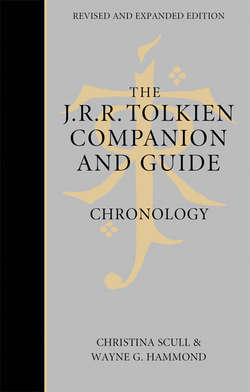Читать книгу The J. R. R. Tolkien Companion and Guide: Volume 1: Chronology - Christina Scull - Страница 30
Оглавление1908
Beginning of 1908 Ronald and Hilary move to 37 Duchess Road, Edgbaston, the home of Louis Faulkner, a wine merchant; his wife, Mrs Faulkner, holds musical evenings which some of the Fathers from the nearby Oratory attend. The boys’ room is on the second floor; in the room beneath them is another lodger, Edith Bratt. The three young people become friends, and deeper feelings develop between Ronald and Edith. She conspires with the Faulkners’ maid, *Annie Gollins, to smuggle extra food from the kitchen to the hungry boys upstairs, by means of a basket lowered from their window.
Spring and summer terms 1908 Ronald continues in Class I, Section A5 at King Edward’s School; there are twenty-one pupils in the First Class. He will end the term ranked sixteenth in his Mathematics section. Hilary Tolkien is now in Transitus, Section C5.
25 and 27 June 1908 Athletic Sports are held at the King Edward’s School Grounds.
30 July 1908 Speech Day and prize-giving at King Edward’s School. Ronald is awarded a prize for achievement in English.
Autumn term 1908 Christopher Wiseman has now joined Ronald and seventeen others in the First Class at King Edward’s School. Rob Gilson and Vincent Trought are in the Second Class. Hilary Tolkien is now in Class VI, Section B6. Ronald is now a King Edward’s Scholar, a distinction which will continue until he leaves the School in 1911. He will end the term ranked thirteenth in Mathematics Section A4, under Assistant Master the Rev. F.O. Lane. During this term he also takes a voluntary class in Practical Chemistry, taught by Assistant Master T.J. Baker. – During the 1908–9 school year Ronald will present to the School library two books by *G.K. Chesterton, Orthodoxy (1908) and Heretics (1905).
1908 or 1909 One of Ronald’s school-friends buys A Primer of the Gothic Language by *Joseph Wright at a missionary sale, thinking it a Bible Society product. When he realizes his error he sells the book to Ronald, who upon opening it is ‘at least as full of delight as first looking into Chapman’s Homer’ (quoted in Biography, p. 37). The surviving fragments of Gothic (*Languages) give him aesthetic pleasure. He is fascinated by Gothic in itself, ‘a beautiful language’, and learns from the primer how to convert words of other Germanic languages into Gothic script. ‘I often put “Gothic” inscriptions in books, sometimes Gothicizing my Norse name and German surname as Ruginwaldus Dwalakōnis’ (letter to Zillah Sherring, 20 July 1965, Letters, p. 357). He inscribes ‘Ermanaþiudiska Razda eþþau Gautiska tungō’ (‘Language of the Great People, or Gautish [Gothic] tongue’) inside a notebook to be used for work dealing with Gothic, but only uses a few pages (the notebook will be used later for a Quenya phonology and lexicon). – He now abandons the Latin- and Spanish-influenced Naffarin and begins to develop an imaginary ‘lost’ Germanic language, trying to fit it into the historical development of the Germanic tongues.
